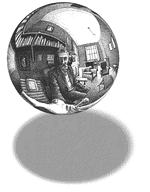How do you explain the Birkenau crematorium?

Dear AnswerMan,
How do you explain the crematorium at Birkenau?
Pauline Friedman

AnswerMan Replies:
If there is a topic that has been more thoroughly examined by revisionists than the Birkenau crematoria, I do not know what it is. My answer will be brief. Anyone desirous of more details should examine the wealth of material here and on other revisionist sites on the Internet.
In 1942 the Auschwitz concentration camp complex expanded rapidly with plans for even greater expansion. During the summer of that year the camp was struck by an epidemic of typhus, also called “jail house fever” and “spotted fever.” Hundreds of people, both inmates and staff, came down with the often fatal disease — which is spread by body lice — and were dying every week. Himmler issued orders that the mortality rate in the camps must be lowered.
The small crematory at Auschwitz I was not able to dispose of the bodies created by the epidemic. Many of the bodies were buried in mass graves. Because of high water table in and around Birkenau, burying the dead was not a healthy nor practical solution. So new facilities were designed and construction of the Birkenau crematoria began in late 1942. These were completed in the spring and summer the following year.
The design and normal capacity of crematory facilities at Birkenau closely match the registered death rate of prisoners at the camp. Records of fuel delivered to the facilities also matches the amount needed to dispose of the bodies of those registered as having died at Auschwitz. Out of a camp population in the tens of thousands, about one hundred people were dying every day during 1943.
It is reasonable to expect design to be the product of intent. This being the case, it is obvious the Nazi designers did not intend the crematoria support homicidal gas chambers, but to dispose of the bodies of those who were dying from disease at Auschwitz and Birkenau. Since the crematoria at the camp could not support gas chambers, the implication is there were no gas chambers to support.
Bibliography
- Butz: THE HOAX OF THE TWENTIETH CENTURY (1977)
- Eknes: Crematories II and III of Birkenau: A Critical Study
- Kulaszka: DID SIX MILLION REALLY DIE?: Report of the Evidence in the Canadian “False News” Trial of Ernst Zundel – 1988 (1992)
- Lenski: THE HOLOCAUST ON TRIAL: The Case of Ernst Zundel (1990)
- Leuchter: THE LEUCHTER REPORTS (with Robert Faurisson, Germar Rudolf, 2005)
- Mattogno: AUSCHWITZ: The End of a Legend (1994)
- Mattogno: MY BANNED HOLOCAUST INTERVIEW (1996)
- Mattogno: “The Crematoria Ovens of Auschwitz and Birkenau”, in: Germar Rudolf (ed.), Dissecting the Holocaust (2003)
- Pressac: AUSCHWITZ: Technique and Operation of the Gas Chambers (1989)
- Stäglich: THE AUSCHWITZ MYTH (1986)
Bibliographic information about this document: n/a
Other contributors to this document: n/a
Editor’s comments: n/a
